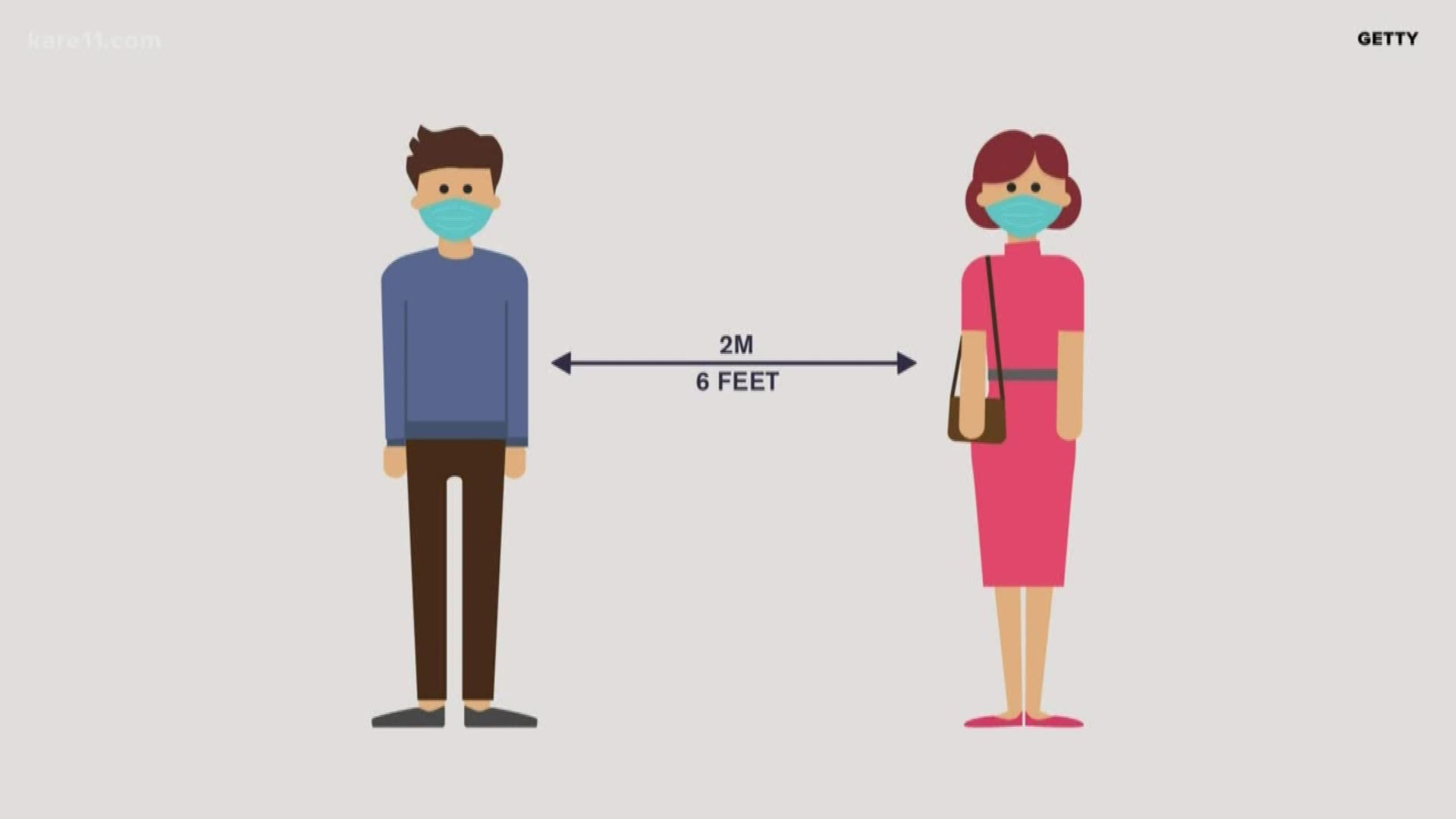MINNEAPOLIS — You've probably heard this repeatedly, when it comes to social distancing, you should stay at least six feet from others to protect yourself from coronavirus.
But is the six-foot rule enough?
Some people have interpreted the rule to mean that you can still get together in large groups as long as everyone is six feet away from each other.
Doctors say that’s not a good idea.
“Six feet is kind of a general recommendation,” Dr. James Miner says.
Miner is the chair of emergency medicine at the Hennepin County Medical Center.
He says the six-foot rule is only an educated guess.
It’s the world’s top health officials estimate for how far the coronavirus may be able to travel in the air, but he says doctors are still learning new things about the virus every day.
“I don’t think anyone knows enough about this virus yet to say how long it’s going to persist in every situation,” Dr. Miner says.
Recently there has been some disagreement about whether the six-foot rule is truly accurate.
New research out of MIT suggests the coronavirus may be able to travel up to 27-feet in the air.
MIT associate professor Lydia Bourouiba has spent years researching how particles in coughs and sneezes travel in the air.
Her study was published in the Journal of American Medical Association last week and it shows a study that suggests exhalations, sneezes and coughs, could create gaseous clouds that can travel up to 27 feet.
Bourouiba states in her study that she doesn’t know whether these measurements can apply to the coronavirus itself, but the study suggests that more research is needed to better understand how the virus spreads.
Dr. Miner isn’t sure whether the coronavirus could truly travel further than six feet.
But with the limited amount of research that’s available he says it’s certainly a possibility.
“That’s always going to be a theoretical risk, but frankly the risk of getting this virus from a surface is so much higher than the aerosolized risk.”
Dr. Miner says the virus can live on a surface for several hours, even days.
So, even if a group of people keeps their distance, it's very likely several people could touch the same surface, even hours apart from each other, and still spread the virus.
"The likelihood of you touching a spot someone else touched, and accidentally touching your face before you get a chance to wash your hands goes up the more people are around you," Dr. Miner says.
That's why Dr. Miner says getting together in large groups, even outside, still isn't a good idea right now.
On Tuesday, Governor Tim Walz mentioned his office is still getting reports of big crowds despite his stay at home order last week.
He's encouraging people to keep social distancing in mind even with the Easter and Passover holidays coming up where people may be tempted to bend the rules to be closer with family.
KARE 11’s coverage of the coronavirus is rooted in Facts, not Fear. Visit kare11.com/coronavirus for comprehensive coverage, find out what you need to know about the Midwest specifically, learn more about the symptoms, and see what companies in Minnesota are hiring. Have a question? Text it to us at 763-797-7215. And get the latest coronavirus updates sent right to your inbox every morning. Subscribe to the KARE 11 Sunrise newsletter here. Help local families in need: www.kare11.com/give11.
The state of Minnesota has set up a hotline for general questions about coronavirus at 651-201-3920 or 1-800-657-3903, available 7 a.m. to 7 p.m.
More information on the coronavirus:

